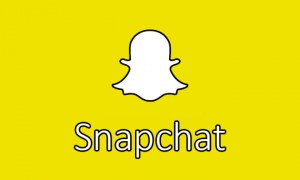Snapchat
https://www.youtube.com/watch?v=kkr0_LGYhWc
Snapchat is a mobile application which allows users to send 10 second photos and videos, called ‘Snaps’ to their social networks, which after viewing, self destruct. Primarily marketed towards high school and university students, Snapchat provides a platform for users to “share photos freely — without the ramifications of other social services” (Taylor, 2013). After being launched in 2011, Snapchat now has 100 million active users across the world, and approximately 2 million active Australian users, as of June 2015 (Cowling, 2015), and is now valued at $4 billion (Murdock, R., 2013).
In conjunction with the ability to send private Snaps, Snapchat also provides a ‘Story’ function, which provides users with the ability to publicly produce a series of “Snaps together to create a narrative that lasts for 24 hours” (Snapchat, 2015), as well as an in-application chat function, which allows users who are friends to privately send text based messages to each other, which also delete when the application is closed.
Despite the controversy surrounding the potential for sexually inappropriate and law breaking content to be distributed, Snapchat CEO and cofounder Evan Speigel contends that is not the main focus of the app, stating “I’m not convinced that the whole sexting thing is as big as the media makes it out to be… just don’t know people who do that” (Speigel, cited in Gallagher, 2012). Due to the temporary nature of the application, Snapchat does not save the content used on their service, and thus it is hard to know how it is being used.
In his 2013 essay, “Am I going insane? Snapchat is intrinsically worthless”, Murdock proposes three potential reasons for Snapchat’s global success;
- It is low pressure – due to the self-destructing nature of content, as well as the ability to limit who sees the content, users are more likely to take risks with what they produce and distribute. This is contrasted to social media platforms such as Facebook, Instagram and Twitter, which are considered ‘high pressure’, in which users compete for attention, likes and comments, and turns “social interaction into a game that can be measured” (Murdock, R., 2013).
- It is easy and ephemeral – Snapchat provides users with a medium which they can send and receive impermanent content, allowing users to be more creative with the content they produce.
- It is fun and frisky – The unfiltered and private nature of Snapchat ensures that users feel the messages they send can be as provocative (or not) as they wish. Murdock proposes that “Snapchat provides an unfiltered outlet for self-expression” (Murdock, R., 2013).
Murdock’s reflection upon the benefits of Snapchat ties in closely with the research undertaken by Van House, Davis et al which explores the effects of sharing personal photography on social relationships. Van House, Davis et al places a focus upon self expression, which as they define as “giving voice to one’s unique view of the world” (Van House, Davis et al, 2004, p.8), which ties in closely to how Murdock proposes users use Snapchat.
With a function called ‘Story’, it is easy to see how Snapchat is attempting to redefine to what it means to have a constructed narrative in the twenty first century. By linking together a series of 10 second images or videos, users are encouraged to create a piece of media which contains a beginning, a middle and an end. These stories can be defined under Alexander and Levine’s understanding of microcontent, as the small chunks of content come together to create an overall story. Alexander and Levine consider how different platforms are constantly producing “new practices for telling stories” (Alexander and Levine, 2008, p.42).
Snapchat’s ‘Our Story’ function, which launched last year allows users brings together a “collection of snaps submitted by users about certain events, like music festivals and holidays” (DeAmicis, 2015). Generally linked by geographical location, these collaborative stories allow multiple viewpoints and perspectives to be simultaneously shown. Reaching, on average, just under 25 million users, (Carlson, 2015) the ‘Our Story’ function As a new and constantly evolving landscape, Snapchat’s ‘Our Story’ is a “new environment for storytelling” (Alexander and Levine, 2008, p.42), which has audiences which rivals traditional media.

